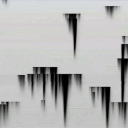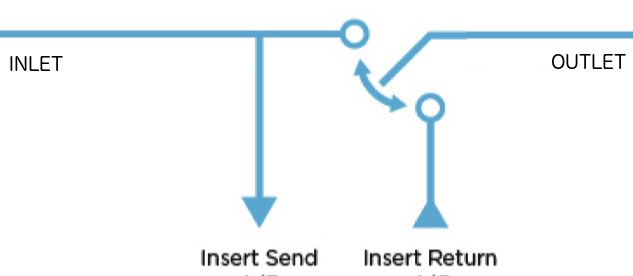-
 palaver
posted in libpd / webpd • read more
palaver
posted in libpd / webpd • read more@Michael All the steps are pretty clearly detailed in #6. Which part are you having difficulty with? Have you verified you have python installed on your computer and which version it is? Do you know how to navigate to the folder you created for the project? Are the version-dependent python http-server commands unclear/not working?
All of step 6 is just to run a little web server on your computer so you can test things out before putting it on your internet-facing web server. You could just as easily upload all of the files to your remote server and test it if you don't mind others being able to see it.
-
 palaver
posted in libpd / webpd • read more
palaver
posted in libpd / webpd • read moreHmmm, a quick browse of the supported objects notes that bangs [bng], sliders [vsl]/[hsl], toggles [tgl], and radios [hradio]/[vradio] all work within the patch.
No additional HTML/Javascript knowledge necessary. Is that what you were looking for? Otherwise, the readme notes the use of JS to send messages to your patches from the web page. In this case you'll have to take a crash course on JS/HTML to get much done. If you do end up going there, there are some pretty cool JS knobs and other control widgets available. -
 palaver
posted in technical issues • read more
palaver
posted in technical issues • read more"... the challenge is being able to differentiate a silent connection from no connection"
Good point, and exactly the thing that made me disfavor signal detection. I may well want to insert something that actually attenuates the signal, say like a volume pedal. By convention, I guess I could use an offset like you describe. I think I'd prefer a toggle at that point, considering the extra work adding the offsets would entail throughout my patches, but it is interesting to think about in any event. Thanks for tossing that idea out there.
-
 palaver
posted in technical issues • read more
palaver
posted in technical issues • read moreThanks David. The only reason I considered signal detection was to avoid using a toggle. This is an exercise in pure laziness and interface design. Were there a method for detecting not signal, but a connection to an inlet, I would be where I want to be. Not strictly necessary by any means, just a convenience.
-
 palaver
posted in technical issues • read more
palaver
posted in technical issues • read moreI've been wondering how to emulate the normally connected effect send/return pair that is found in most pro mixing consoles in a patch that would function something like the diagram below:

The idea being that the signal path proceeds straight from inlet to outlet unless something is inserted to redirect the signal through another patch then back to the insert point and on to the outlet. This would seem to be a straight-forward task if it were possible to detect whether or not a connection exists to a specific inlet or outlet and then reroute the signal accordingly. Is this possible in Pd Vanilla? I've thought of a hack to reroute the original signal based on the presence of a signal at the return, but would prefer to base it on whether or not the connection exists instead.
Basically, I just want to expose interesting insert points in some patches for quick and easy application of discreet effects or processing without having to dig into their guts every time I want to add some reverb, delay, vibrato, or whatever.
Thanks,
P -
 palaver
posted in patch~ • read more
palaver
posted in patch~ • read moreThe update did the trick. I can now use the mover more predictably, except of course it is difficult to know when you've reached the exact size to fit. More importantly, 'fit' gets the size right. I find that I have to move the content up four ticks every time to get the whole object with the GOP window though, but that's a small price to pay for an otherwise perfect fit. Also, good move on the 'normal speed' button in the content properties. Not sure if that's new or not, but I was searching for a way to get the speed correct without too much effort when setting up.
Thanks again for sharing your work. I'm doing some weird out-of-sync sample playback experimentation, and Context is giving me a lot of flexibility.
-
 palaver
posted in patch~ • read more
palaver
posted in patch~ • read moreCount me as interested in this thread too, only I won't have much to contribute as I am absolutely new to actually designing reverb patches. Thanks for sharing your patches and links. I've always had a kind of background fascination with reverb ever since I learned audio production techniques in the 1990's. Back then, I couldn't get enough Lexicon 'math' in my mixes, while of course it was a special treat to have access to a beautiful room that could be mic'd up and used as an old-school reverb chamber.
-
 palaver
posted in patch~ • read more
palaver
posted in patch~ • read moreThanks for sharing your sequencer! I look forward to getting familiar with it. One question so far: How do I get samples that have been loaded in content objects to fit the entire overlay area? The manual suggests using the 'fit' command, but when I send it to the content command message inlet, I get 'command not recognized: fit' in the Pd console. I also tried using a mover object and was able to resize one content object after quite a bit of fussing, but I haven't been able to repeat the feat with others.
Thanks,
p -
 palaver
posted in technical issues • read more
palaver
posted in technical issues • read more[1 2 3 4( | [list length] | [print]That will give you the list length, but be careful, if you supply [1, 2, 3( as the source message above, the output will be three 1's, as the comma actually delimits multiple messages from within one message object.
Hope that helps.
-
 palaver
posted in I/O hardware diy • read more
palaver
posted in I/O hardware diy • read more@kempkeith, The SS2 is great! It really shines in the MIDI realm, but offers a decent amount of functionality with OSC as well, as long (as you're willing to keep it "hosted" within an app running on your desktop). The customization on offer is mind-blowing and pretty easy to understand after poking around the software for an hour or two. Funny thing is I started out using OSC and hosting quite a bit of my logic right on the SS2, but soon realized if I switched to MIDI, I could manage all the communication from a Pd abstraction that updates the LEDs and display as the state of my patch changes. Right now I use it in one of its most basic configurations sending CC messages in response to button down/up events and receiving LED/display updates, and I couldn't be happier. The physical construction seems pretty bullet-proof so far - slightly flexible, but resilient.
